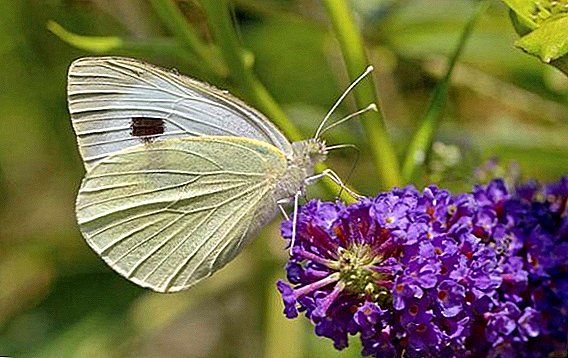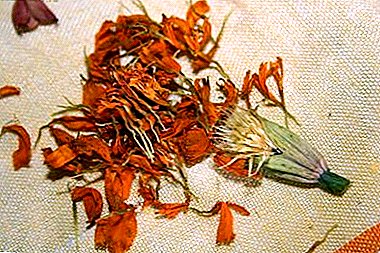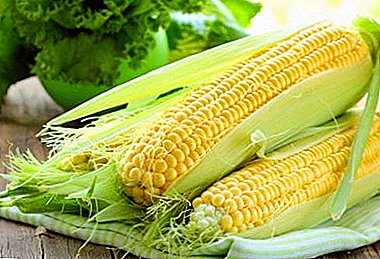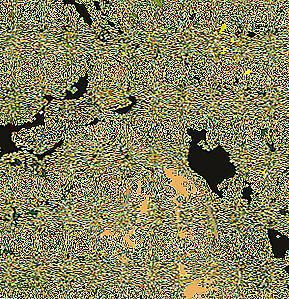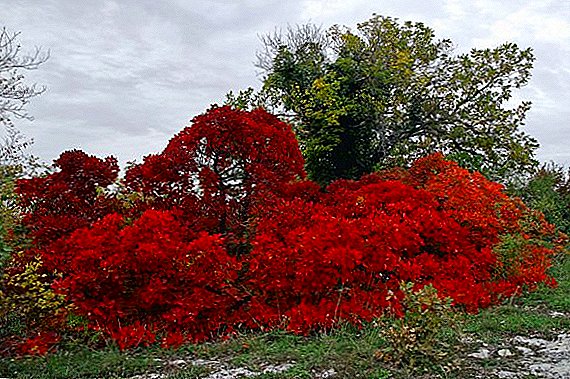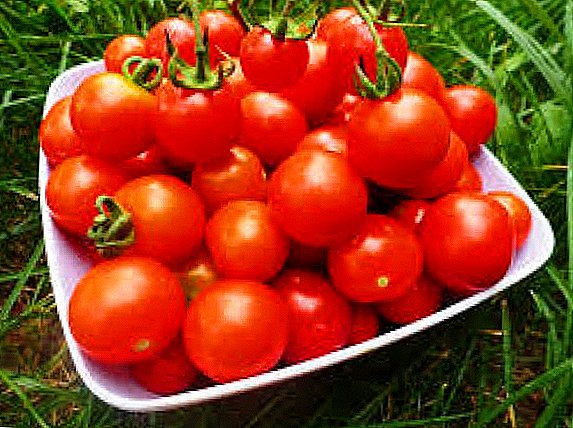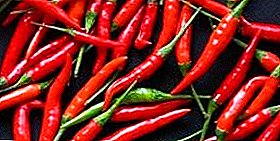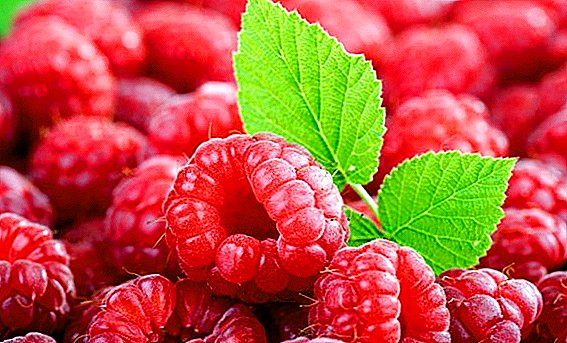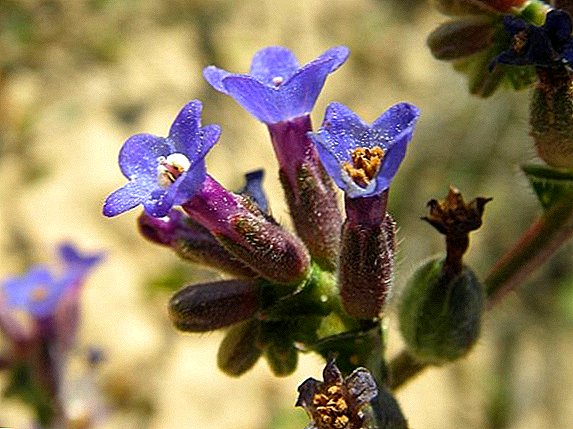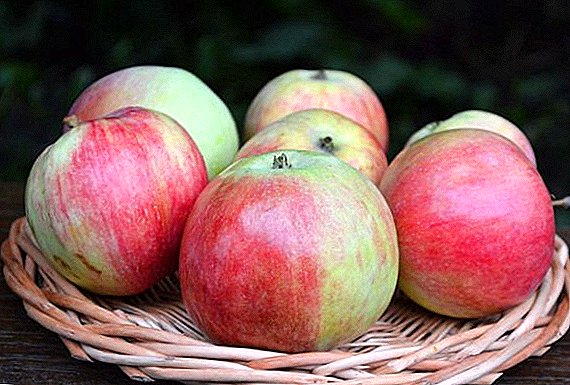 Many apple lovers are well acquainted with large red-sided fruits appearing on market stalls in early autumn. This variety is called “Bellefle-Kitaika”, and it is a bright representative of dessert apple varieties. Despite its more than a century of history, "Bellefle-Chinese" remains popular among gardeners. Let's take a closer look at this variety and learn its features.
Many apple lovers are well acquainted with large red-sided fruits appearing on market stalls in early autumn. This variety is called “Bellefle-Kitaika”, and it is a bright representative of dessert apple varieties. Despite its more than a century of history, "Bellefle-Chinese" remains popular among gardeners. Let's take a closer look at this variety and learn its features.
About breeding
In the distant 1908, the ancestor of apples Belle Chinese, was derived by the ancestor of the selection of Michurin by crossing the Yellow Belfleur with the large-fruited Chinese. And the first fruit was brought by a seven-year-old seedling in 1914. The variety immediately gained immense popularity and quickly spread from the Central Black Soil Region to the North Caucasus, from Ukraine to Armenia. In the middle of the last century, the early winter “Belfleur Bashkir” was bred on the basis of the Belflere-Kitaika variety, which is distinguished by better keeping quality, frost resistance and scab resistance.  Currently, due to the emergence of more stable hybrids, its popularity has fallen somewhat. But in some regions, for example, in the North Caucasus and the Volga region, the climate is so favorable for this variety that it does not lose its position there. In addition, the variety has been successfully used as a maternal when crossed.
Currently, due to the emergence of more stable hybrids, its popularity has fallen somewhat. But in some regions, for example, in the North Caucasus and the Volga region, the climate is so favorable for this variety that it does not lose its position there. In addition, the variety has been successfully used as a maternal when crossed.
Did you know? For the first time an apple tree appeared in Russia in the XI century.
Botanical description
The "Belle Flay Chinese" tree stands out for its large size, powerful skeletal branches and an impressive round-shaped crown.
Wood
The height of the trees of this variety can reach ten meters. The tree has a wide spherical crown. Light brown shoots with a reddish tint directed downward. The leaves are large, dense, oval-shaped, gray-green in color, with nicks at the edges.
The autumn varieties of apple trees include the varieties “Brusnichnoye”, “Gala”, “Red Chief”, “Sun”, “Semerenko”, “Pepin saffron”, “Bashkir beauty”, “Uralets”, “Zhigulevskoe” and “Streyfling”.
Fruits
The variety is autumn, although for the southern regions it is rather a late summer. Fruits are ribbed, slightly flattened, large (on average, up to 200 g). By the way, the author's Michurin trees brought apples of even larger size - about 340 g. Under appropriate conditions and excellent care, the fruits of the “Belleuf-Chinese” can reach a weight of 500 g and even more. Professional gardeners enjoy this success by presenting such specimens at thematic exhibitions.  Apples have a small and medium stalk. As they mature, their light green brightens and becomes light yellow during removal. The color of the cover is a pink-red blush in the form of stripes, covering a smaller part of the fruit. In addition, noticeable bright spots appear under the skin of apples. Fruits "Bellefle-Chinese" are characterized by tender juicy fine-grained flesh of white color, sweet taste with a slight sourness and characteristic spicy flavor. The sugar content in fruits is 11%.
Apples have a small and medium stalk. As they mature, their light green brightens and becomes light yellow during removal. The color of the cover is a pink-red blush in the form of stripes, covering a smaller part of the fruit. In addition, noticeable bright spots appear under the skin of apples. Fruits "Bellefle-Chinese" are characterized by tender juicy fine-grained flesh of white color, sweet taste with a slight sourness and characteristic spicy flavor. The sugar content in fruits is 11%.
Specifications Grade
Like all apple varieties, Belle Flay Chinese has specific characteristics of the variety.
Apple tree disease can be affected by powdery mildew, and from pests - aphid.
Winter hardiness and disease resistance
Poor frost resistance is one of the main reasons why the variety has not spread in places with a harsh climate. But in order to increase the resistance of the “Bellefle-Kitaika” to cold, you can pin a branch of a tree to a more frost-resistant variety. In addition, the variety has low resistance to some diseases and pests, especially scab and powdery mildew.  In most cases, the scab infects the fruits of apple trees, with black dots appearing on them, and dark growths on the leaves. Immediately remove affected parts. Prevention of this disease is planting seedlings at a great distance from each other, regular thinning of the crown and processing plants with special insecticides.
In most cases, the scab infects the fruits of apple trees, with black dots appearing on them, and dark growths on the leaves. Immediately remove affected parts. Prevention of this disease is planting seedlings at a great distance from each other, regular thinning of the crown and processing plants with special insecticides.
Important! In the treatment of fungal lesions of apple trees, the following antifungal drugs have proven themselves well: "Zircon", "Charm" and "Healthy Garden".Mealy dew usually appears in the spring and looks like a dense white coating on the leaves of the plant. Later the bloom darkens and acquires a reddish hue. At the same time, the leaves of the trees begin to curl and fall off. For the treatment of this disease, fungicides or Bordeaux mixture are used.
Pollination
"Chinese Bellefleur" refers to those varieties that need external pollination. Therefore, in order to get a good harvest, pollinators should be planted next to the “Bellefle Chinese”. In their quality it is recommended to use the following varieties of apples: “Antonovka”, “Autumn striped”, “Brown striped”.
Period of ripeness and yield
On average, the seedling begins to bear fruit in the seventh year after planting. The tree blooms in the first half of May, and the fruits ripen around mid-September. One of the characteristic features of "Bellefle Chinese" is that the fruits are well kept on the tree and do not fall on their own.
It will also be interesting to read about dried and frozen apples.Productivity depends on climate and tree care, as well as on their age. The average tree in the eighth year after planting gives 50-70 kg of fruit. The maximum yield they start to bring in 20 years and older, then the crop can reach up to 200 kg from one tree.
Transportability and storage
"Bellefle Chinese" has good transportability. It is characteristic that after harvest the apples ripen and reach their full taste in about two weeks. In a dry place, fresh apples are beautifully stored for about two months, and if you put them in a refrigerator or cellar, you can well lie down until the end of December. 
Did you know? The apple garden, which later became known as the garden of the Kiev-Pechersk Lavra, was founded during the reign of Yaroslav the Wise in 1051.
Growing conditions
Sapling "Bellefle Chinese" is better to purchase in well-established nurseries. The optimum age of the tree for planting is two years. When buying, you should pay attention only to strong specimens with a non-dry and well-developed root system. The preferred landing time in the middle lane is the second half of April. But you can plant in the fall after the foliage falls from the trees, but not later than two weeks before the arrival of frost.
Learn how to plant an apple tree in spring and autumn.Lightweight sandy or loamy soil, sunny and well-blown place is suitable for planting. It is categorically impossible to plant on a plot with a high level of groundwater, as well as in clay and peat soils. The distance between seedlings should be within 4-6 meters. A spacious pit is prepared for planting, which is filled up with a nutrient mixture in advance. A planted tree is watered, tied to a peg dug, the tree trunk is mulched. After planting, it is necessary to provide the seedling with regular watering and pruning of the growing crown.
 It should be made in the spring, and dry branches cut off in the fall after harvest. In addition, the trees should be fed: in the spring, nitrogen fertilizers are introduced for better growth, in the summer, potassium fertilizers are formed to form flowers and ovaries, and phosphorus-containing fertilizers are added in the autumn for better frost resistance. Since the apple tree is quite large, some gardeners prefer to grow it on a dwarf rootstock. This saves garden space and makes harvesting easier.
It should be made in the spring, and dry branches cut off in the fall after harvest. In addition, the trees should be fed: in the spring, nitrogen fertilizers are introduced for better growth, in the summer, potassium fertilizers are formed to form flowers and ovaries, and phosphorus-containing fertilizers are added in the autumn for better frost resistance. Since the apple tree is quite large, some gardeners prefer to grow it on a dwarf rootstock. This saves garden space and makes harvesting easier.Advantages and disadvantages
The advantages of "Bellefle Chinese" include:
- big fruits with a beautiful presentation;
- pleasant sweet taste with a slight sourness and a spicy shade;
- at the expense of a short strong stalk the apples keep well on the tree, do not fall down;
- well tolerated transportation;
- good keeping quality - on average about two months, in a cold place - up to four.
Important! Please note that your full taste of apples "Belle Fler Chinese" acquire, lying in a dry place for several weeks after removal.
 Grade Disadvantages:
Grade Disadvantages:- late ripening of apples;
- large sizes of trees make it difficult to care for them and harvest;
- low resistance to frost;
- fairly low resistance to scab and powdery mildew;
- late fruiting.


